The Power of Positive Emotions in Resilience
Positive emotions play a crucial role in resilience, helping individuals bounce back from adversity, stay motivated, and inspire others. Many great personalities have demonstrated how positive emotions like optimism, gratitude, and hope contribute to overcoming challenges. Here are six key points, illustrated with social examples from famous figures:
The Power of Positive Emotions in Resilience
Positive emotions play a crucial role in resilience, helping individuals bounce back from adversity, stay motivated, and inspire others. Many great personalities have demonstrated how positive emotions like optimism, gratitude, and hope contribute to overcoming challenges. Here are six key points, illustrated with social examples from famous figures:
1. Optimism Transforms Challenges into Opportunities:-
Example: Nelson Mandela
Despite being imprisoned for 27 years, Nelson Mandela remained optimistic about the future of South Africa. His unwavering hope and positive outlook helped him endure hardship and eventually lead his nation to reconciliation and democracy. Instead of harboring resentment, he promoted peace and unity, showing how optimism fuels resilience.
2. Gratitude Enhances Mental Strength:-
Example: Oprah Winfrey
Oprah Winfrey faced extreme poverty, abuse, and discrimination in her early life, yet she consistently expressed gratitude for every opportunity. She credits her gratitude practice as a key factor in overcoming adversity and becoming one of the most influential media moguls. Her resilience is rooted in appreciating life’s blessings, no matter how small.
3. Hope Drives Perseverance:-
Example: Malala Yousafzai
After surviving an assassination attempt by the Taliban, Malala Yousafzai could have succumbed to fear. However, her hope for a better future for girls’ education made her stronger. She became a global advocate for education, proving that hope can turn personal trauma into a worldwide movement for change.
4. Love and Compassion Strengthen Connections:-
Example: Mother Teresa
Mother Teresa dedicated her life to serving the poor and sick, showing that love and compassion create resilience. Despite facing immense challenges—lack of resources, criticism, and exhausting work—her deep love for humanity kept her mission alive. Her resilience stemmed from her compassion for others, making her an icon of selfless service.
5. Joy and Humor Alleviate Stress and Build Resilience:-
Example: Charlie Chaplin
Charlie Chaplin grew up in extreme poverty, experiencing homelessness and hardship. However, he used humor and joy to cope with adversity. His ability to find laughter in tough times helped him become a legendary entertainer, showing that joy can be a powerful tool for resilience and success.
6. Faith and Inner Peace Provide Strength:-
Example: Mahatma Gandhi
Gandhi’s unwavering faith in nonviolence and truth helped him lead India’s independence movement against British rule. Despite facing imprisonment, attacks, and immense pressure, his inner peace and belief in justice kept him resilient. His calm demeanor and spiritual strength inspired millions to pursue change without violence. The Science of Mindfulness: Lessons from "The Miracle of Mindfulness" by Thich Nhat Hanh
How mindfulness enhances mental clarity and emotional resilience.
Scientific studies on meditation and stress reduction.

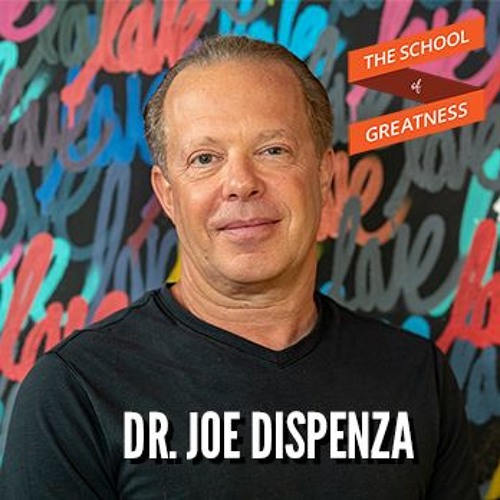 Dr. Joe Dispenza's teachings emphasize the idea that our thoughts shape our reality in profound ways. He explains that where you place your attention is where you place your energy, meaning that whatever you focus on influences both your internal state and the world around you. When you focus on negativity, you're reinforcing those negative feelings, which can attract more of the same. On the other hand, focusing on positivity, gratitude, and love helps align your energy with better outcomes and creates a shift toward a more positive reality.
To harness the power of your thoughts, it all starts with becoming aware of them. When you realize that your focus is often on past struggles or future worries, you can make a conscious decision to shift your focus toward future possibilities. Setting clear intentions and visualizing your desired reality is key in this process. It's important to not just visualize what you want, but also to feel as though it is already happening, which helps create the emotional connection needed to manifest it.
Meditation is a central practice in Dr. Dispenza's teachings, as it helps break old thought patterns and creates space for new, empowering beliefs. By meditating regularly, you begin to rewire your brain and let go of limiting beliefs. Alongside meditation, elevating your emotional state is crucial. Gratitude and love, for instance, are emotions that naturally align your energy with your goals and help you resonate at a higher frequency, enabling you to attract what you want.
Consistency is the final piece of the puzzle. Repeating positive thoughts, intentions, and visualizations on a regular basis helps to solidify new neural pathways in the brain, making the shift in your thinking and emotional state more permanent. Over time, this leads to lasting changes in your reality.
Dr. Joe Dispenza's teachings emphasize the idea that our thoughts shape our reality in profound ways. He explains that where you place your attention is where you place your energy, meaning that whatever you focus on influences both your internal state and the world around you. When you focus on negativity, you're reinforcing those negative feelings, which can attract more of the same. On the other hand, focusing on positivity, gratitude, and love helps align your energy with better outcomes and creates a shift toward a more positive reality.
To harness the power of your thoughts, it all starts with becoming aware of them. When you realize that your focus is often on past struggles or future worries, you can make a conscious decision to shift your focus toward future possibilities. Setting clear intentions and visualizing your desired reality is key in this process. It's important to not just visualize what you want, but also to feel as though it is already happening, which helps create the emotional connection needed to manifest it.
Meditation is a central practice in Dr. Dispenza's teachings, as it helps break old thought patterns and creates space for new, empowering beliefs. By meditating regularly, you begin to rewire your brain and let go of limiting beliefs. Alongside meditation, elevating your emotional state is crucial. Gratitude and love, for instance, are emotions that naturally align your energy with your goals and help you resonate at a higher frequency, enabling you to attract what you want.
Consistency is the final piece of the puzzle. Repeating positive thoughts, intentions, and visualizations on a regular basis helps to solidify new neural pathways in the brain, making the shift in your thinking and emotional state more permanent. Over time, this leads to lasting changes in your reality. 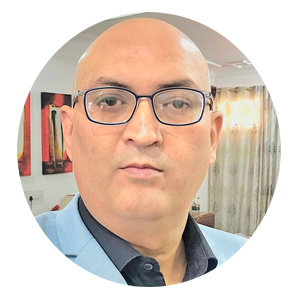
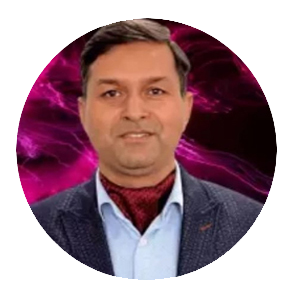
 In How God Changes Your Brain, Dr. Andrew Newberg delves into the fascinating intersection between spirituality and neuroscience, showing how spiritual practices like meditation and prayer can actually reshape the brain’s structure and function. Newberg’s research highlights the profound impact that these practices have on our brain, leading to physical changes that improve attention, emotional regulation, and self-awareness.
One of the key findings in Newberg’s work is that engaging in spiritual practices can increase gray matter in critical regions of the brain, such as the prefrontal cortex and hippocampus. The prefrontal cortex is responsible for high-level cognitive functions like focus, decision-making, and self-control, while the hippocampus is central to memory and emotional regulation. By enhancing these areas, spiritual practices can improve a person’s ability to concentrate, make thoughtful decisions, and manage their emotions effectively.
The increase in gray matter in these regions through spiritual practices suggests that the brain’s capacity for self-regulation and emotional balance can be strengthened over time. For instance, practicing meditation or prayer can help individuals reduce stress, increase empathy, and become more resilient in the face of challenges. These benefits stem from the brain’s ability to rewire itself, a process known as neuroplasticity, which allows the brain to adapt and change in response to new experiences, including those rooted in spiritual practice.
Additionally, Newberg emphasizes the role of spiritual practices in enhancing self-awareness. As individuals engage in prayer or meditation, they cultivate a heightened sense of mindfulness and presence, which can lead to a deeper understanding of their own thoughts and emotions. This heightened self-awareness is crucial for personal growth and emotional intelligence, as it allows individuals to better navigate their internal landscape and respond more effectively to external challenges.
Newberg’s exploration of the neuroscience of spirituality reveals that the benefits of spiritual practices extend beyond the metaphysical realm and have tangible effects on our brain’s health and function. By regularly engaging in activities like meditation and prayer, individuals can not only foster a deeper connection to their spirituality but also enhance cognitive abilities, emotional well-being, and resilience. This intersection of spirituality and neuroscience underscores the powerful potential for spiritual practices to promote both mental and emotional health, reinforcing the idea that our minds and spirits are interconnected in profound and meaningful ways.
In How God Changes Your Brain, Dr. Andrew Newberg delves into the fascinating intersection between spirituality and neuroscience, showing how spiritual practices like meditation and prayer can actually reshape the brain’s structure and function. Newberg’s research highlights the profound impact that these practices have on our brain, leading to physical changes that improve attention, emotional regulation, and self-awareness.
One of the key findings in Newberg’s work is that engaging in spiritual practices can increase gray matter in critical regions of the brain, such as the prefrontal cortex and hippocampus. The prefrontal cortex is responsible for high-level cognitive functions like focus, decision-making, and self-control, while the hippocampus is central to memory and emotional regulation. By enhancing these areas, spiritual practices can improve a person’s ability to concentrate, make thoughtful decisions, and manage their emotions effectively.
The increase in gray matter in these regions through spiritual practices suggests that the brain’s capacity for self-regulation and emotional balance can be strengthened over time. For instance, practicing meditation or prayer can help individuals reduce stress, increase empathy, and become more resilient in the face of challenges. These benefits stem from the brain’s ability to rewire itself, a process known as neuroplasticity, which allows the brain to adapt and change in response to new experiences, including those rooted in spiritual practice.
Additionally, Newberg emphasizes the role of spiritual practices in enhancing self-awareness. As individuals engage in prayer or meditation, they cultivate a heightened sense of mindfulness and presence, which can lead to a deeper understanding of their own thoughts and emotions. This heightened self-awareness is crucial for personal growth and emotional intelligence, as it allows individuals to better navigate their internal landscape and respond more effectively to external challenges.
Newberg’s exploration of the neuroscience of spirituality reveals that the benefits of spiritual practices extend beyond the metaphysical realm and have tangible effects on our brain’s health and function. By regularly engaging in activities like meditation and prayer, individuals can not only foster a deeper connection to their spirituality but also enhance cognitive abilities, emotional well-being, and resilience. This intersection of spirituality and neuroscience underscores the powerful potential for spiritual practices to promote both mental and emotional health, reinforcing the idea that our minds and spirits are interconnected in profound and meaningful ways.
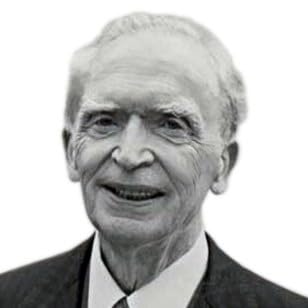 In The Power of Your Subconscious Mind, Joseph Murphy delves into the incredible influence the subconscious mind has on shaping our thoughts, behaviors, and ultimately, our reality. According to Murphy, the subconscious acts like a powerful engine that drives our daily actions, beliefs, and habits, often running in the background without our conscious awareness. Many of the patterns that govern our lives are formed by subconscious programming, which can sometimes limit our potential or create negative cycles. Murphy argues that by consciously tapping into and reprogramming the subconscious mind, individuals can break free from these limiting beliefs and habits, thus transforming their lives.
Murphy emphasizes that the subconscious mind is not just a passive storage system for memories; it is a dynamic force that influences our mental and emotional states. It absorbs thoughts, experiences, and beliefs, whether positive or negative, and reflects them back into our reality through our actions and responses. For example, if a person constantly believes they are not worthy of success, this belief becomes ingrained in their subconscious mind, influencing their behaviors in ways that prevent them from achieving their goals.
One of the key techniques Murphy recommends for harnessing the power of the subconscious mind is the use of positive affirmations. By repeating affirmations—positive statements about ourselves and our desired outcomes—we can overwrite the negative beliefs and self-doubt that often reside in our subconscious. Affirmations are a way to "retrain" the subconscious, gradually replacing limiting beliefs with empowering ones. Over time, these affirmations help build confidence, promote self-belief, and encourage a positive mindset, which can significantly improve our lives.
Visualization is another powerful tool that Murphy suggests for accessing the subconscious mind. Visualization involves mentally picturing the desired outcome as if it has already happened. When we visualize a goal or success, we engage the subconscious in a way that makes the outcome feel more attainable. This mental rehearsal not only strengthens belief in our ability to achieve our goals but also helps us align our thoughts, emotions, and actions with the desired reality. Visualization, combined with positive affirmations, can create a potent synergy that accelerates the manifestation of our desires.
Murphy’s teachings revolve around the idea that the subconscious mind is always at work, either reinforcing our current beliefs or helping us create new ones. By using tools like affirmations and visualization, we can consciously influence this process and shift our internal programming. Reprogramming the subconscious allows us to replace old, negative patterns with new, empowering ones. As a result, we can experience greater success, happiness, and fulfillment in every area of our lives.
In The Power of Your Subconscious Mind, Joseph Murphy delves into the incredible influence the subconscious mind has on shaping our thoughts, behaviors, and ultimately, our reality. According to Murphy, the subconscious acts like a powerful engine that drives our daily actions, beliefs, and habits, often running in the background without our conscious awareness. Many of the patterns that govern our lives are formed by subconscious programming, which can sometimes limit our potential or create negative cycles. Murphy argues that by consciously tapping into and reprogramming the subconscious mind, individuals can break free from these limiting beliefs and habits, thus transforming their lives.
Murphy emphasizes that the subconscious mind is not just a passive storage system for memories; it is a dynamic force that influences our mental and emotional states. It absorbs thoughts, experiences, and beliefs, whether positive or negative, and reflects them back into our reality through our actions and responses. For example, if a person constantly believes they are not worthy of success, this belief becomes ingrained in their subconscious mind, influencing their behaviors in ways that prevent them from achieving their goals.
One of the key techniques Murphy recommends for harnessing the power of the subconscious mind is the use of positive affirmations. By repeating affirmations—positive statements about ourselves and our desired outcomes—we can overwrite the negative beliefs and self-doubt that often reside in our subconscious. Affirmations are a way to "retrain" the subconscious, gradually replacing limiting beliefs with empowering ones. Over time, these affirmations help build confidence, promote self-belief, and encourage a positive mindset, which can significantly improve our lives.
Visualization is another powerful tool that Murphy suggests for accessing the subconscious mind. Visualization involves mentally picturing the desired outcome as if it has already happened. When we visualize a goal or success, we engage the subconscious in a way that makes the outcome feel more attainable. This mental rehearsal not only strengthens belief in our ability to achieve our goals but also helps us align our thoughts, emotions, and actions with the desired reality. Visualization, combined with positive affirmations, can create a potent synergy that accelerates the manifestation of our desires.
Murphy’s teachings revolve around the idea that the subconscious mind is always at work, either reinforcing our current beliefs or helping us create new ones. By using tools like affirmations and visualization, we can consciously influence this process and shift our internal programming. Reprogramming the subconscious allows us to replace old, negative patterns with new, empowering ones. As a result, we can experience greater success, happiness, and fulfillment in every area of our lives.
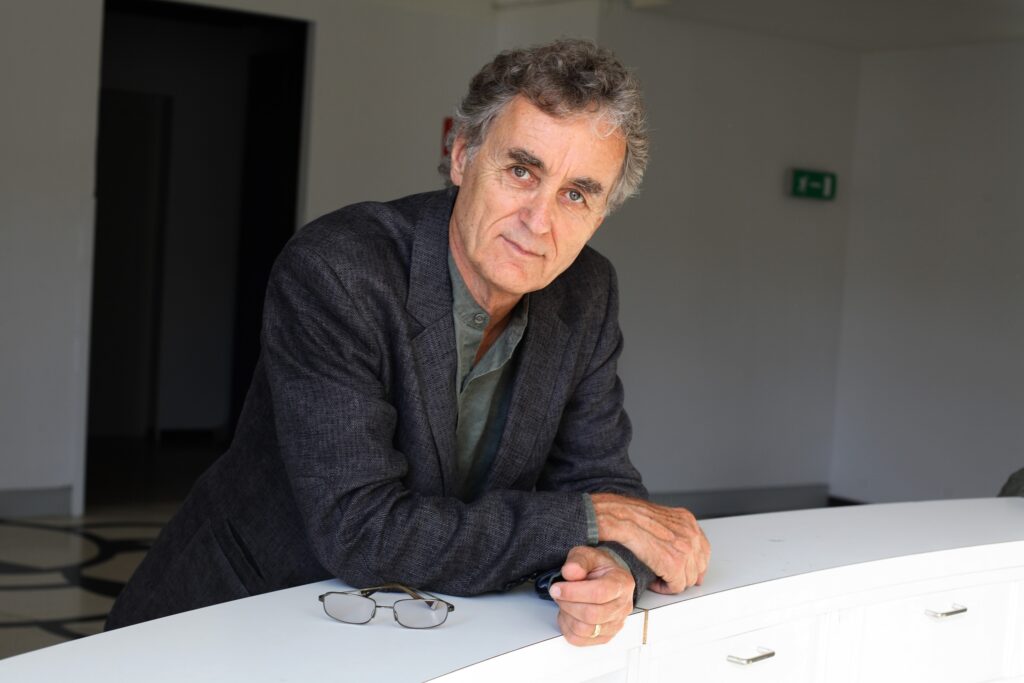 In The In The Tao of Physics, Fritjof Capra explores the fascinating intersection of quantum physics and Eastern philosophy, proposing that both offer a vision of a unified, interconnected reality. Capra's work bridges the gap between science and spirituality, suggesting that the universe, at its core, is not fragmented—as traditionally believed in Western science—but deeply interconnected, a view that resonates with the teachings of Eastern traditions like Taoism and Buddhism. He argues that quantum physics and spiritual philosophies converge in their understanding of the cosmos, particularly in relation to consciousness and its connection to the universe.
Capra’s primary insight is that quantum physics reveals an underlying unity in the universe, where particles behave in ways that defy classical logic. In quantum mechanics, particles are not isolated entities but are interconnected, even across vast distances, through what is called quantum entanglement. This phenomenon challenges our conventional understanding of space, time, and causality, suggesting that at a fundamental level, everything in the universe is intricately connected. This idea mirrors the central tenets of Eastern philosophies, which view the universe as a whole, where every part is intrinsically linked to the others.
In Taoism, for example, the concept of the Tao describes the fundamental interconnectedness of all things, the flow of energy that binds the universe together. Similarly, in Buddhism, the idea of interconnectedness is captured in the doctrine of dependent origination, which teaches that all phenomena arise in relation to one another and that nothing exists in isolation. Capra highlights these parallels, suggesting that Eastern spiritual traditions were intuitively aware of the unified nature of reality long before quantum physics provided empirical evidence of it.
Both quantum physics and Eastern philosophies point to the idea that consciousness is not separate from the universe but is an integral part of it. In quantum physics, consciousness is thought to play a role in the collapse of the wave function, which determines the state of a quantum system. This suggests that consciousness is not just a passive observer but an active participant in shaping reality. Similarly, Eastern philosophies emphasize the idea that the individual self is not isolated from the larger cosmic consciousness but is part of an ongoing process of interrelation and unity.
Capra's work invites readers to reconsider the boundaries between science and spirituality, showing that both realms—though historically viewed as separate—may be pointing toward the same profound truth: the universe is a unified whole, and consciousness is intricately woven into the fabric of existence. Just as quantum physics has revealed a reality that defies traditional notions of separation and fragmentation, Eastern spiritual teachings have long proposed a view of the universe as a dynamic, interconnected process, where everything is linked through the flow of energy or consciousness.
In The In The Tao of Physics, Fritjof Capra explores the fascinating intersection of quantum physics and Eastern philosophy, proposing that both offer a vision of a unified, interconnected reality. Capra's work bridges the gap between science and spirituality, suggesting that the universe, at its core, is not fragmented—as traditionally believed in Western science—but deeply interconnected, a view that resonates with the teachings of Eastern traditions like Taoism and Buddhism. He argues that quantum physics and spiritual philosophies converge in their understanding of the cosmos, particularly in relation to consciousness and its connection to the universe.
Capra’s primary insight is that quantum physics reveals an underlying unity in the universe, where particles behave in ways that defy classical logic. In quantum mechanics, particles are not isolated entities but are interconnected, even across vast distances, through what is called quantum entanglement. This phenomenon challenges our conventional understanding of space, time, and causality, suggesting that at a fundamental level, everything in the universe is intricately connected. This idea mirrors the central tenets of Eastern philosophies, which view the universe as a whole, where every part is intrinsically linked to the others.
In Taoism, for example, the concept of the Tao describes the fundamental interconnectedness of all things, the flow of energy that binds the universe together. Similarly, in Buddhism, the idea of interconnectedness is captured in the doctrine of dependent origination, which teaches that all phenomena arise in relation to one another and that nothing exists in isolation. Capra highlights these parallels, suggesting that Eastern spiritual traditions were intuitively aware of the unified nature of reality long before quantum physics provided empirical evidence of it.
Both quantum physics and Eastern philosophies point to the idea that consciousness is not separate from the universe but is an integral part of it. In quantum physics, consciousness is thought to play a role in the collapse of the wave function, which determines the state of a quantum system. This suggests that consciousness is not just a passive observer but an active participant in shaping reality. Similarly, Eastern philosophies emphasize the idea that the individual self is not isolated from the larger cosmic consciousness but is part of an ongoing process of interrelation and unity.
Capra's work invites readers to reconsider the boundaries between science and spirituality, showing that both realms—though historically viewed as separate—may be pointing toward the same profound truth: the universe is a unified whole, and consciousness is intricately woven into the fabric of existence. Just as quantum physics has revealed a reality that defies traditional notions of separation and fragmentation, Eastern spiritual teachings have long proposed a view of the universe as a dynamic, interconnected process, where everything is linked through the flow of energy or consciousness.
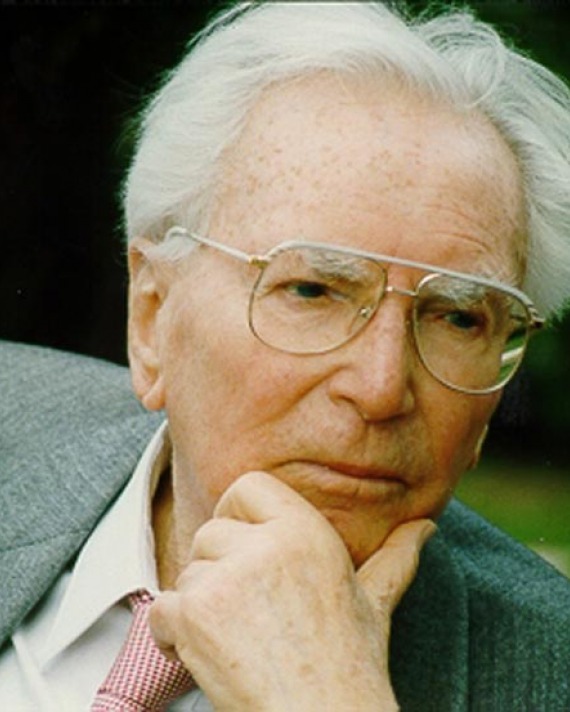 In Man’s Search for Meaning, Viktor Frankl reflects on his harrowing experiences as a prisoner in Nazi concentration camps and explores how the search for meaning is essential to both survival and fulfillment in life. As a psychiatrist and Holocaust survivor, Frankl draws from his own suffering and the suffering of those around him to present a powerful argument: even in the most extreme circumstances, individuals can find meaning in life, which can provide the strength and resilience needed to endure hardship.
Frankl’s central message is that the human capacity to find meaning, even in the face of unimaginable suffering, is what ultimately enables people to survive and thrive. According to Frankl, life’s meaning can be discovered through three primary sources: love, work, and the way we respond to suffering. Each of these sources provides a unique and profound connection to purpose, which, in turn, fosters a deeper sense of fulfillment and strength.
Love, Frankl argues, is one of the most powerful sources of meaning. In the concentration camps, even though physical separation from loved ones was often inevitable, the memory and the sense of connection to others gave many prisoners the emotional strength to endure. Love, for Frankl, is not only about romantic relationships but also encompasses the deep bonds we have with others and the sense of meaning derived from caring for and connecting with those we love. This deep emotional connection, even if only through memory or spiritual love, becomes a vital source of resilience.
Meaningful work is another crucial element in finding purpose. Frankl notes that having a sense of accomplishment, regardless of the circumstances, helps to foster a sense of value and contribution. Whether through creative endeavors or simple acts of service, work gives individuals a sense of purpose and an opportunity to shape their own narrative. Even in the direst situations, Frankl observed that those who found a way to contribute—through their work, ideas, or attitudes—were more likely to survive and maintain a sense of personal dignity. Work gives us a sense of control and a way to align ourselves with our deeper values, even when external conditions are beyond our control.
Finally, Frankl emphasizes the importance of how we choose to confront suffering. While suffering is an inevitable part of life, Frankl believed that the way we approach and respond to it is a critical determinant of how we experience and transcend it. Frankl himself found meaning in his suffering by choosing to view it as an opportunity for personal growth and transformation. By finding purpose in adversity—by deciding to choose one’s attitude toward suffering—individuals can transcend even the most painful experiences. Frankl’s belief in the transformative power of suffering encourages us to look for meaning in our hardships rather than simply viewing them as pointless or dehumanizing.
In Man’s Search for Meaning, Viktor Frankl reflects on his harrowing experiences as a prisoner in Nazi concentration camps and explores how the search for meaning is essential to both survival and fulfillment in life. As a psychiatrist and Holocaust survivor, Frankl draws from his own suffering and the suffering of those around him to present a powerful argument: even in the most extreme circumstances, individuals can find meaning in life, which can provide the strength and resilience needed to endure hardship.
Frankl’s central message is that the human capacity to find meaning, even in the face of unimaginable suffering, is what ultimately enables people to survive and thrive. According to Frankl, life’s meaning can be discovered through three primary sources: love, work, and the way we respond to suffering. Each of these sources provides a unique and profound connection to purpose, which, in turn, fosters a deeper sense of fulfillment and strength.
Love, Frankl argues, is one of the most powerful sources of meaning. In the concentration camps, even though physical separation from loved ones was often inevitable, the memory and the sense of connection to others gave many prisoners the emotional strength to endure. Love, for Frankl, is not only about romantic relationships but also encompasses the deep bonds we have with others and the sense of meaning derived from caring for and connecting with those we love. This deep emotional connection, even if only through memory or spiritual love, becomes a vital source of resilience.
Meaningful work is another crucial element in finding purpose. Frankl notes that having a sense of accomplishment, regardless of the circumstances, helps to foster a sense of value and contribution. Whether through creative endeavors or simple acts of service, work gives individuals a sense of purpose and an opportunity to shape their own narrative. Even in the direst situations, Frankl observed that those who found a way to contribute—through their work, ideas, or attitudes—were more likely to survive and maintain a sense of personal dignity. Work gives us a sense of control and a way to align ourselves with our deeper values, even when external conditions are beyond our control.
Finally, Frankl emphasizes the importance of how we choose to confront suffering. While suffering is an inevitable part of life, Frankl believed that the way we approach and respond to it is a critical determinant of how we experience and transcend it. Frankl himself found meaning in his suffering by choosing to view it as an opportunity for personal growth and transformation. By finding purpose in adversity—by deciding to choose one’s attitude toward suffering—individuals can transcend even the most painful experiences. Frankl’s belief in the transformative power of suffering encourages us to look for meaning in our hardships rather than simply viewing them as pointless or dehumanizing.
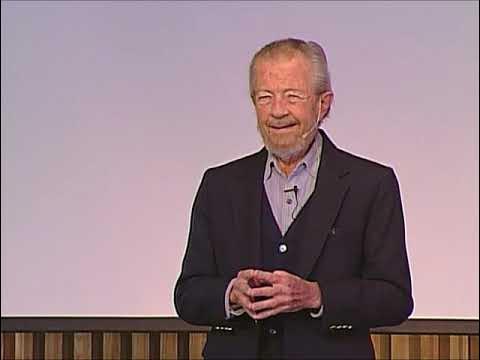 In Power vs. Force, David R. Hawkins explores the profound impact that emotions have on our energy, well-being, and the quality of our interactions with others. Hawkins introduces the idea that emotions vibrate at different frequencies, and these emotional frequencies can either elevate or lower our overall energy. According to Hawkins, positive emotions such as love, joy, and gratitude vibrate at higher, faster frequencies, contributing to greater vitality, mental clarity, and inner peace. Conversely, negative emotions like fear, anger, and sadness vibrate at lower, slower frequencies, draining our energy and potentially leading to stress, illness, and negative life patterns.
Hawkins’ central premise is that our emotional energy has a direct influence on our personal power. When we experience higher-frequency emotions, our energy is more expansive, and we align ourselves with higher states of consciousness, allowing us to navigate life with greater ease, resilience, and harmony. On the other hand, when we are dominated by lower-frequency emotions, we often feel stuck, anxious, or disconnected from our true potential. These emotions not only affect our internal state but also impact the way we interact with the world and the people around us.
One of the key ways to shift our energy and improve our well-being, according to Hawkins, is through practices that cultivate higher-frequency emotions. Gratitude, forgiveness, and love are all powerful tools for raising our emotional frequency. For instance, practicing gratitude helps us shift our focus from what is lacking in our lives to what is abundant, naturally elevating our energy and fostering a sense of inner peace. Forgiveness, too, is an essential practice for releasing the emotional burden of past hurts, allowing us to free ourselves from negative emotional patterns and move into a space of greater emotional freedom and clarity. Love, the highest vibrational emotion, connects us to others and to a higher state of consciousness, creating a sense of unity and expansive energy.
Hawkins also emphasizes the importance of awareness in transforming our emotional states. By becoming more conscious of our emotions and how they affect our energy, we can take proactive steps to shift toward higher frequencies. This awareness enables us to recognize when we are caught in lower-frequency emotions like fear or anger and provides the opportunity to consciously choose a different emotional response. Over time, with consistent practice, we can train ourselves to naturally gravitate toward emotions that enhance our vitality and personal power.
The impact of raising our emotional frequency extends beyond our personal well-being. Hawkins suggests that as we align with higher-frequency emotions, we not only improve our health and happiness but also positively influence the world around us. Our emotional energy ripples outward, affecting our relationships, work environments, and even the collective consciousness. By embodying positive emotions, we contribute to a more harmonious, compassionate world, helping to uplift others and create a more supportive environment for all.
In essence, Power vs. Force teaches that our emotional energy is a powerful force that shapes not only our inner experience but also the way we engage with the world. By cultivating higher-frequency emotions like love, gratitude, and forgiveness, we can increase our personal power, enhance our health, and create a positive ripple effect in the world. Our emotions, when consciously managed, can serve as a transformative tool for growth, healing, and connection to a higher state of consciousness.
In Power vs. Force, David R. Hawkins explores the profound impact that emotions have on our energy, well-being, and the quality of our interactions with others. Hawkins introduces the idea that emotions vibrate at different frequencies, and these emotional frequencies can either elevate or lower our overall energy. According to Hawkins, positive emotions such as love, joy, and gratitude vibrate at higher, faster frequencies, contributing to greater vitality, mental clarity, and inner peace. Conversely, negative emotions like fear, anger, and sadness vibrate at lower, slower frequencies, draining our energy and potentially leading to stress, illness, and negative life patterns.
Hawkins’ central premise is that our emotional energy has a direct influence on our personal power. When we experience higher-frequency emotions, our energy is more expansive, and we align ourselves with higher states of consciousness, allowing us to navigate life with greater ease, resilience, and harmony. On the other hand, when we are dominated by lower-frequency emotions, we often feel stuck, anxious, or disconnected from our true potential. These emotions not only affect our internal state but also impact the way we interact with the world and the people around us.
One of the key ways to shift our energy and improve our well-being, according to Hawkins, is through practices that cultivate higher-frequency emotions. Gratitude, forgiveness, and love are all powerful tools for raising our emotional frequency. For instance, practicing gratitude helps us shift our focus from what is lacking in our lives to what is abundant, naturally elevating our energy and fostering a sense of inner peace. Forgiveness, too, is an essential practice for releasing the emotional burden of past hurts, allowing us to free ourselves from negative emotional patterns and move into a space of greater emotional freedom and clarity. Love, the highest vibrational emotion, connects us to others and to a higher state of consciousness, creating a sense of unity and expansive energy.
Hawkins also emphasizes the importance of awareness in transforming our emotional states. By becoming more conscious of our emotions and how they affect our energy, we can take proactive steps to shift toward higher frequencies. This awareness enables us to recognize when we are caught in lower-frequency emotions like fear or anger and provides the opportunity to consciously choose a different emotional response. Over time, with consistent practice, we can train ourselves to naturally gravitate toward emotions that enhance our vitality and personal power.
The impact of raising our emotional frequency extends beyond our personal well-being. Hawkins suggests that as we align with higher-frequency emotions, we not only improve our health and happiness but also positively influence the world around us. Our emotional energy ripples outward, affecting our relationships, work environments, and even the collective consciousness. By embodying positive emotions, we contribute to a more harmonious, compassionate world, helping to uplift others and create a more supportive environment for all.
In essence, Power vs. Force teaches that our emotional energy is a powerful force that shapes not only our inner experience but also the way we engage with the world. By cultivating higher-frequency emotions like love, gratitude, and forgiveness, we can increase our personal power, enhance our health, and create a positive ripple effect in the world. Our emotions, when consciously managed, can serve as a transformative tool for growth, healing, and connection to a higher state of consciousness.
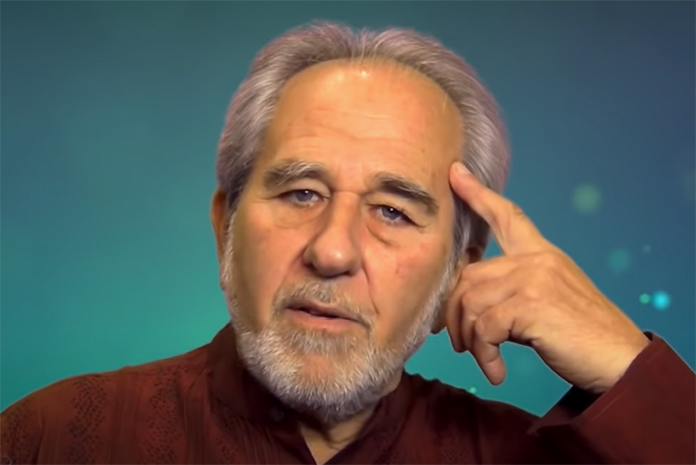 In The Biology of Belief, Bruce Lipton presents groundbreaking insights into the powerful connection between the mind and body, specifically how our thoughts and emotions influence our genetic expression through the process of epigenetics. Lipton challenges the traditional view that our biology is largely determined by our genetic code, suggesting instead that we are not passive recipients of our genetic makeup. Instead, our mental and emotional states actively shape and influence our biology, offering a powerful way for us to improve our health and well-being.
According to Lipton, our beliefs, thoughts, and emotions have a direct impact on the way our genes are expressed. Epigenetics—the study of how environmental factors can influence gene activity—reveals that our mental and emotional states can turn certain genes on or off. Positive thoughts and emotions, such as love, joy, and gratitude, can activate genes that promote health, well-being, and healing. Conversely, negative emotions, stress, and fear can suppress protective genes and contribute to the development of illness and disease.
This concept of epigenetic influence shows that we are not merely victims of our genetic predispositions. Rather, we have the power to actively shape our genetic expression through the way we think and feel. For example, when we experience stress or fear, our bodies enter a state of "fight or flight," which can suppress immune function and hinder the body's ability to heal. On the other hand, cultivating positive emotions and reducing stress can help activate genes that support healing and immune function, ultimately leading to better overall health.
Lipton's work underscores the importance of mental and emotional well-being in maintaining good health. By consciously shifting our thoughts and emotions, we can influence the expression of our genes in ways that promote healing and vitality. For instance, practices like mindfulness, meditation, and positive affirmations can help reprogram negative thought patterns and foster a mindset that supports health and resilience. In this way, Lipton highlights the role of consciousness in shaping our physical reality, emphasizing that our beliefs and emotions are not abstract or disconnected from our biology—they are biological forces that have a direct and profound impact on our DNA.
Furthermore, Lipton suggests that our beliefs play a central role in our health. If we believe that we are destined for illness or failure, we may unconsciously activate genes that support that outcome. Conversely, if we cultivate a mindset of health, vitality, and empowerment, we are more likely to activate genes that support those outcomes. This perspective empowers individuals to take charge of their health by becoming more conscious of their thoughts and emotions and working to align them with positive, health-promoting beliefs.
In The Biology of Belief, Bruce Lipton presents groundbreaking insights into the powerful connection between the mind and body, specifically how our thoughts and emotions influence our genetic expression through the process of epigenetics. Lipton challenges the traditional view that our biology is largely determined by our genetic code, suggesting instead that we are not passive recipients of our genetic makeup. Instead, our mental and emotional states actively shape and influence our biology, offering a powerful way for us to improve our health and well-being.
According to Lipton, our beliefs, thoughts, and emotions have a direct impact on the way our genes are expressed. Epigenetics—the study of how environmental factors can influence gene activity—reveals that our mental and emotional states can turn certain genes on or off. Positive thoughts and emotions, such as love, joy, and gratitude, can activate genes that promote health, well-being, and healing. Conversely, negative emotions, stress, and fear can suppress protective genes and contribute to the development of illness and disease.
This concept of epigenetic influence shows that we are not merely victims of our genetic predispositions. Rather, we have the power to actively shape our genetic expression through the way we think and feel. For example, when we experience stress or fear, our bodies enter a state of "fight or flight," which can suppress immune function and hinder the body's ability to heal. On the other hand, cultivating positive emotions and reducing stress can help activate genes that support healing and immune function, ultimately leading to better overall health.
Lipton's work underscores the importance of mental and emotional well-being in maintaining good health. By consciously shifting our thoughts and emotions, we can influence the expression of our genes in ways that promote healing and vitality. For instance, practices like mindfulness, meditation, and positive affirmations can help reprogram negative thought patterns and foster a mindset that supports health and resilience. In this way, Lipton highlights the role of consciousness in shaping our physical reality, emphasizing that our beliefs and emotions are not abstract or disconnected from our biology—they are biological forces that have a direct and profound impact on our DNA.
Furthermore, Lipton suggests that our beliefs play a central role in our health. If we believe that we are destined for illness or failure, we may unconsciously activate genes that support that outcome. Conversely, if we cultivate a mindset of health, vitality, and empowerment, we are more likely to activate genes that support those outcomes. This perspective empowers individuals to take charge of their health by becoming more conscious of their thoughts and emotions and working to align them with positive, health-promoting beliefs.
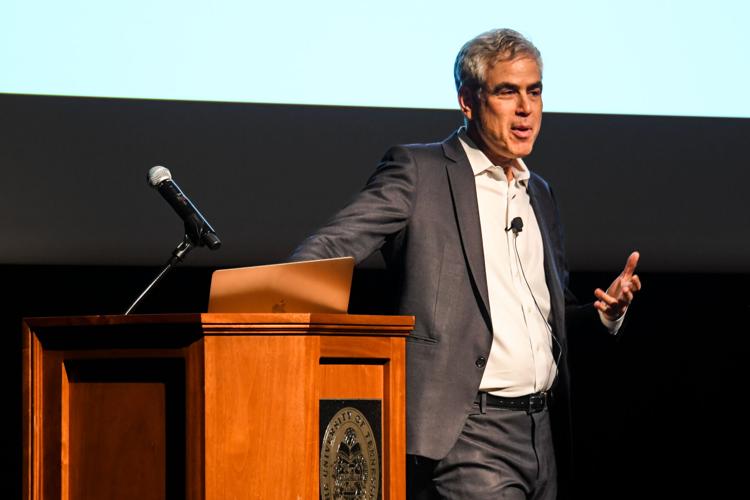 In The Happiness Hypothesis, Jonathan Haidt delves into the fascinating intersection of ancient wisdom and modern positive psychology, revealing how both fields offer valuable insights into fostering happiness and well-being. Haidt bridges the gap between traditional teachings from ancient philosophical and spiritual traditions—such as Buddhism, Stoicism, and Confucianism—and the contemporary science of positive psychology, demonstrating that many of the practices they advocate for are remarkably similar to those promoted in modern psychology.
A key theme in Haidt's exploration is the importance of cultivating practices like mindfulness, meditation, gratitude, and compassion, which have long been central to ancient traditions. For instance, in Buddhism, mindfulness and meditation are used to develop a deep awareness of the present moment, cultivate inner peace, and break free from negative patterns of thought. Similarly, Stoicism emphasizes emotional resilience and self-control, teaching individuals to maintain equanimity in the face of life's challenges. These teachings align closely with the practices promoted in positive psychology, which focuses on mental health, happiness, and well-being.
Haidt explains that both ancient traditions and modern positive psychology recognize the importance of fostering a positive mindset. A crucial component of happiness, Haidt suggests, is our ability to cultivate positive emotions and build resilience. The practices of gratitude and compassion, for example, are integral to both ancient wisdom and modern psychological approaches. Gratitude shifts our focus from what is lacking to what we have, promoting feelings of contentment and joy, while compassion enhances our sense of connection and well-being by fostering empathy and kindness toward others.
Another important parallel Haidt draws is the emphasis on creating meaningful life experiences. Both positive psychology and ancient traditions highlight the need for a sense of purpose in life as a key factor in overall happiness. In Buddhism, this purpose is often found through spiritual practice and the pursuit of enlightenment, while Stoicism encourages individuals to align their actions with virtue and reason. In positive psychology, researchers like Martin Seligman emphasize the importance of engaging in activities that are personally meaningful and aligned with one's values as a path to happiness.
Haidt also introduces the concept of the "happiness hypothesis," which posits that the mind is like a "rider" (the conscious, rational self) riding on an "elephant" (the subconscious, emotional self). This metaphor illustrates the dynamic between our conscious thoughts and unconscious emotions, showing how they interact to influence our behavior and well-being. According to Haidt, achieving happiness requires both aligning our rational thoughts with our emotional states and engaging in practices that foster positive emotions and resilience.
In The Happiness Hypothesis, Jonathan Haidt delves into the fascinating intersection of ancient wisdom and modern positive psychology, revealing how both fields offer valuable insights into fostering happiness and well-being. Haidt bridges the gap between traditional teachings from ancient philosophical and spiritual traditions—such as Buddhism, Stoicism, and Confucianism—and the contemporary science of positive psychology, demonstrating that many of the practices they advocate for are remarkably similar to those promoted in modern psychology.
A key theme in Haidt's exploration is the importance of cultivating practices like mindfulness, meditation, gratitude, and compassion, which have long been central to ancient traditions. For instance, in Buddhism, mindfulness and meditation are used to develop a deep awareness of the present moment, cultivate inner peace, and break free from negative patterns of thought. Similarly, Stoicism emphasizes emotional resilience and self-control, teaching individuals to maintain equanimity in the face of life's challenges. These teachings align closely with the practices promoted in positive psychology, which focuses on mental health, happiness, and well-being.
Haidt explains that both ancient traditions and modern positive psychology recognize the importance of fostering a positive mindset. A crucial component of happiness, Haidt suggests, is our ability to cultivate positive emotions and build resilience. The practices of gratitude and compassion, for example, are integral to both ancient wisdom and modern psychological approaches. Gratitude shifts our focus from what is lacking to what we have, promoting feelings of contentment and joy, while compassion enhances our sense of connection and well-being by fostering empathy and kindness toward others.
Another important parallel Haidt draws is the emphasis on creating meaningful life experiences. Both positive psychology and ancient traditions highlight the need for a sense of purpose in life as a key factor in overall happiness. In Buddhism, this purpose is often found through spiritual practice and the pursuit of enlightenment, while Stoicism encourages individuals to align their actions with virtue and reason. In positive psychology, researchers like Martin Seligman emphasize the importance of engaging in activities that are personally meaningful and aligned with one's values as a path to happiness.
Haidt also introduces the concept of the "happiness hypothesis," which posits that the mind is like a "rider" (the conscious, rational self) riding on an "elephant" (the subconscious, emotional self). This metaphor illustrates the dynamic between our conscious thoughts and unconscious emotions, showing how they interact to influence our behavior and well-being. According to Haidt, achieving happiness requires both aligning our rational thoughts with our emotional states and engaging in practices that foster positive emotions and resilience.
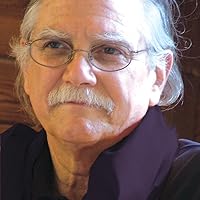 In The Untethered Soul, Michael A. Singer explores the concept of true consciousness, which transcends the thinking mind and connects individuals to a deeper, more expansive awareness often referred to as "higher consciousness" or "universal consciousness." Singer teaches that this state of consciousness allows individuals to experience life in a more present, intuitive, and authentic way—free from the mental filters, judgments, and conditioning that typically shape our everyday reality.
Singer suggests that most of us are often trapped within the confines of our thoughts, constantly reacting to our inner narratives and judgments. These mental patterns create a sense of limitation, preventing us from experiencing life in its full potential. According to Singer, true freedom and inner peace come from transcending these mental patterns. By letting go of the constant stream of thoughts and judgments that fill our minds, we can access a higher state of awareness that is not bound by the constraints of our rational mind.
This higher state of consciousness offers profound clarity, deeper insights, and a sense of unity with everything around us. In this state, individuals no longer see themselves as separate from the world but experience a sense of oneness with all that is. This expanded awareness allows them to move through life with greater peace, understanding, and alignment with their true nature.
One of the key teachings of The Untethered Soul is the idea of "letting go." Singer encourages readers to release the mental patterns and emotional attachments that limit their potential. These attachments, whether to past experiences, future anxieties, or negative emotions, keep individuals tethered to a narrow perspective of reality. By learning to let go of these attachments, people can step into a space of freedom, where they are no longer controlled by their thoughts or emotions.
Singer’s teachings are not about rejecting the mind or intellectual thought, but rather about recognizing that we are more than just our thoughts. True consciousness involves being fully present in the moment, open to life as it unfolds, and free from the need to constantly label, judge, or control our experiences. This higher awareness, Singer argues, is where our true potential lies.
Through practices such as meditation, mindfulness, and self-inquiry, individuals can gradually awaken to this deeper state of consciousness. As they do, they begin to experience a profound shift in how they relate to themselves and the world around them. Life becomes less about reacting to external circumstances and more about aligning with a deeper sense of peace, purpose, and connection.
In The Untethered Soul, Michael A. Singer explores the concept of true consciousness, which transcends the thinking mind and connects individuals to a deeper, more expansive awareness often referred to as "higher consciousness" or "universal consciousness." Singer teaches that this state of consciousness allows individuals to experience life in a more present, intuitive, and authentic way—free from the mental filters, judgments, and conditioning that typically shape our everyday reality.
Singer suggests that most of us are often trapped within the confines of our thoughts, constantly reacting to our inner narratives and judgments. These mental patterns create a sense of limitation, preventing us from experiencing life in its full potential. According to Singer, true freedom and inner peace come from transcending these mental patterns. By letting go of the constant stream of thoughts and judgments that fill our minds, we can access a higher state of awareness that is not bound by the constraints of our rational mind.
This higher state of consciousness offers profound clarity, deeper insights, and a sense of unity with everything around us. In this state, individuals no longer see themselves as separate from the world but experience a sense of oneness with all that is. This expanded awareness allows them to move through life with greater peace, understanding, and alignment with their true nature.
One of the key teachings of The Untethered Soul is the idea of "letting go." Singer encourages readers to release the mental patterns and emotional attachments that limit their potential. These attachments, whether to past experiences, future anxieties, or negative emotions, keep individuals tethered to a narrow perspective of reality. By learning to let go of these attachments, people can step into a space of freedom, where they are no longer controlled by their thoughts or emotions.
Singer’s teachings are not about rejecting the mind or intellectual thought, but rather about recognizing that we are more than just our thoughts. True consciousness involves being fully present in the moment, open to life as it unfolds, and free from the need to constantly label, judge, or control our experiences. This higher awareness, Singer argues, is where our true potential lies.
Through practices such as meditation, mindfulness, and self-inquiry, individuals can gradually awaken to this deeper state of consciousness. As they do, they begin to experience a profound shift in how they relate to themselves and the world around them. Life becomes less about reacting to external circumstances and more about aligning with a deeper sense of peace, purpose, and connection.
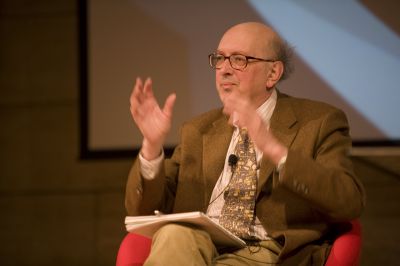 In Synchronicity: The Bridge Between Matter and Mind, F. David Peat delves into the fascinating concept of synchronicity, which refers to meaningful coincidences that seem to occur beyond the scope of rational explanation. Peat suggests that these synchronistic events are not random or coincidental but are instead connected to a deeper, universal consciousness that transcends the logical, thinking mind. This higher consciousness, often associated with intuition and present-moment awareness, enables individuals to experience reality in a way that bypasses the usual mental filters and judgments that shape our perceptions.
Peat’s exploration of synchronicity draws on the idea that the universe operates as a unified, interconnected whole. He argues that synchronicities reveal this underlying interconnectedness, pointing to a reality where mind and matter are not separate entities but are deeply intertwined. In this view, events and experiences that seem coincidental or unrelated are actually part of a larger, meaningful pattern that is beyond the reach of conventional understanding. These moments of synchronicity, according to Peat, reflect the deeper wisdom and intelligence that underlies all of existence.
When individuals are attuned to this higher state of awareness, they become more receptive to synchronicities and may experience moments of clarity, insight, and profound connection to the world around them. These experiences are often accompanied by a sense of oneness with the universe, where the boundaries between self and the external world dissolve. In this state, the individual is no longer trapped within the constraints of the rational mind but is able to experience reality more holistically and intuitively.
Peat’s work suggests that by embracing synchronicity and attuning ourselves to the deeper currents of the universe, we can access a greater understanding of both ourselves and the world we inhabit. These meaningful coincidences can serve as guides, offering insights into our life’s path, revealing hidden connections, and helping us navigate the complexities of existence with greater clarity and purpose. Synchronicity, in this sense, is not just a mystical or inexplicable occurrence; it is a profound invitation to deepen our awareness and experience a more aligned and harmonious life.
By cultivating a sense of presence and mindfulness, individuals can open themselves up to the possibility of synchronicity, recognizing the signs and symbols that point to a larger, interconnected reality. This awareness allows for more meaningful and aligned experiences, as individuals begin to understand the subtle ways in which the universe communicates with them and provides guidance on their journey.
Ultimately, Synchronicity: The Bridge Between Matter and Mind encourages readers to explore the mysteries of the universe and embrace the deeper connections that lie beneath the surface of everyday life. By attuning to this universal consciousness, individuals can access a more profound understanding of themselves and the world, leading to richer, more purposeful experiences.
In Synchronicity: The Bridge Between Matter and Mind, F. David Peat delves into the fascinating concept of synchronicity, which refers to meaningful coincidences that seem to occur beyond the scope of rational explanation. Peat suggests that these synchronistic events are not random or coincidental but are instead connected to a deeper, universal consciousness that transcends the logical, thinking mind. This higher consciousness, often associated with intuition and present-moment awareness, enables individuals to experience reality in a way that bypasses the usual mental filters and judgments that shape our perceptions.
Peat’s exploration of synchronicity draws on the idea that the universe operates as a unified, interconnected whole. He argues that synchronicities reveal this underlying interconnectedness, pointing to a reality where mind and matter are not separate entities but are deeply intertwined. In this view, events and experiences that seem coincidental or unrelated are actually part of a larger, meaningful pattern that is beyond the reach of conventional understanding. These moments of synchronicity, according to Peat, reflect the deeper wisdom and intelligence that underlies all of existence.
When individuals are attuned to this higher state of awareness, they become more receptive to synchronicities and may experience moments of clarity, insight, and profound connection to the world around them. These experiences are often accompanied by a sense of oneness with the universe, where the boundaries between self and the external world dissolve. In this state, the individual is no longer trapped within the constraints of the rational mind but is able to experience reality more holistically and intuitively.
Peat’s work suggests that by embracing synchronicity and attuning ourselves to the deeper currents of the universe, we can access a greater understanding of both ourselves and the world we inhabit. These meaningful coincidences can serve as guides, offering insights into our life’s path, revealing hidden connections, and helping us navigate the complexities of existence with greater clarity and purpose. Synchronicity, in this sense, is not just a mystical or inexplicable occurrence; it is a profound invitation to deepen our awareness and experience a more aligned and harmonious life.
By cultivating a sense of presence and mindfulness, individuals can open themselves up to the possibility of synchronicity, recognizing the signs and symbols that point to a larger, interconnected reality. This awareness allows for more meaningful and aligned experiences, as individuals begin to understand the subtle ways in which the universe communicates with them and provides guidance on their journey.
Ultimately, Synchronicity: The Bridge Between Matter and Mind encourages readers to explore the mysteries of the universe and embrace the deeper connections that lie beneath the surface of everyday life. By attuning to this universal consciousness, individuals can access a more profound understanding of themselves and the world, leading to richer, more purposeful experiences.
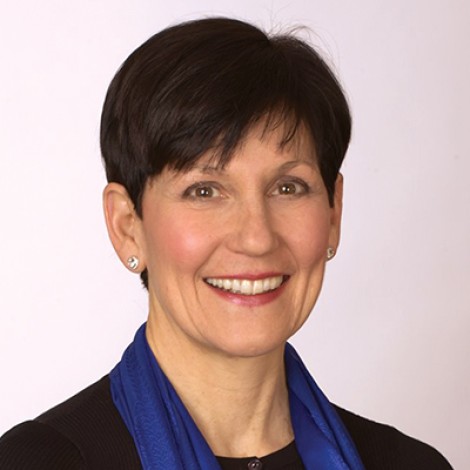 In The Field, Lynne McTaggart delves into the profound concept of collective consciousness, exploring how a universal field of awareness connects individuals through shared beliefs, values, and experiences. McTaggart introduces the idea that consciousness is not a solitary, isolated experience but rather part of a larger, interconnected field that transcends the boundaries of individual minds. This unified field of consciousness has the power to influence and shape human potential in ways that extend beyond the personal level.
McTaggart suggests that when individuals align their thoughts, intentions, and emotions, they tap into this collective energy that fosters collaboration, empathy, and personal growth. The idea that our thoughts and actions are not isolated but part of a larger, interconnected web has significant implications for how we approach both our personal lives and collective challenges. This field of consciousness isn't just a metaphysical concept—it has real-world applications, impacting everything from scientific discoveries to social and cultural movements.
One of the most powerful aspects of the collective consciousness is its ability to unite individuals with diverse perspectives, backgrounds, and experiences. By transcending personal boundaries and fostering a sense of oneness, people can tap into a greater sense of unity. McTaggart emphasizes that this interconnectedness encourages cooperation, allowing individuals to come together to work on shared goals. Whether it's addressing global issues, advancing scientific progress, or promoting social change, the collective consciousness creates a powerful force for positive transformation.
The power of collective consciousness also lies in its ability to spark innovation and creativity. When people align their intentions and collaborate with a shared purpose, they create a synergy that can lead to breakthroughs. In this way, the unified field becomes a catalyst for social progress, driving positive change on both individual and global scales. It is through this interconnectedness that we are able to work together to solve the challenges of our time and contribute to the well-being of the broader world.
Through her exploration of The Field, McTaggart ultimately encourages readers to recognize the importance of connection—both within themselves and with others. By consciously tapping into the collective consciousness, we can unlock our full human potential, foster empathy, and work toward a more unified and progressive world. The book invites us to consider how we can consciously contribute to this interconnected field, helping to shape a more compassionate, innovative, and sustainable future.
In The Field, Lynne McTaggart delves into the profound concept of collective consciousness, exploring how a universal field of awareness connects individuals through shared beliefs, values, and experiences. McTaggart introduces the idea that consciousness is not a solitary, isolated experience but rather part of a larger, interconnected field that transcends the boundaries of individual minds. This unified field of consciousness has the power to influence and shape human potential in ways that extend beyond the personal level.
McTaggart suggests that when individuals align their thoughts, intentions, and emotions, they tap into this collective energy that fosters collaboration, empathy, and personal growth. The idea that our thoughts and actions are not isolated but part of a larger, interconnected web has significant implications for how we approach both our personal lives and collective challenges. This field of consciousness isn't just a metaphysical concept—it has real-world applications, impacting everything from scientific discoveries to social and cultural movements.
One of the most powerful aspects of the collective consciousness is its ability to unite individuals with diverse perspectives, backgrounds, and experiences. By transcending personal boundaries and fostering a sense of oneness, people can tap into a greater sense of unity. McTaggart emphasizes that this interconnectedness encourages cooperation, allowing individuals to come together to work on shared goals. Whether it's addressing global issues, advancing scientific progress, or promoting social change, the collective consciousness creates a powerful force for positive transformation.
The power of collective consciousness also lies in its ability to spark innovation and creativity. When people align their intentions and collaborate with a shared purpose, they create a synergy that can lead to breakthroughs. In this way, the unified field becomes a catalyst for social progress, driving positive change on both individual and global scales. It is through this interconnectedness that we are able to work together to solve the challenges of our time and contribute to the well-being of the broader world.
Through her exploration of The Field, McTaggart ultimately encourages readers to recognize the importance of connection—both within themselves and with others. By consciously tapping into the collective consciousness, we can unlock our full human potential, foster empathy, and work toward a more unified and progressive world. The book invites us to consider how we can consciously contribute to this interconnected field, helping to shape a more compassionate, innovative, and sustainable future.
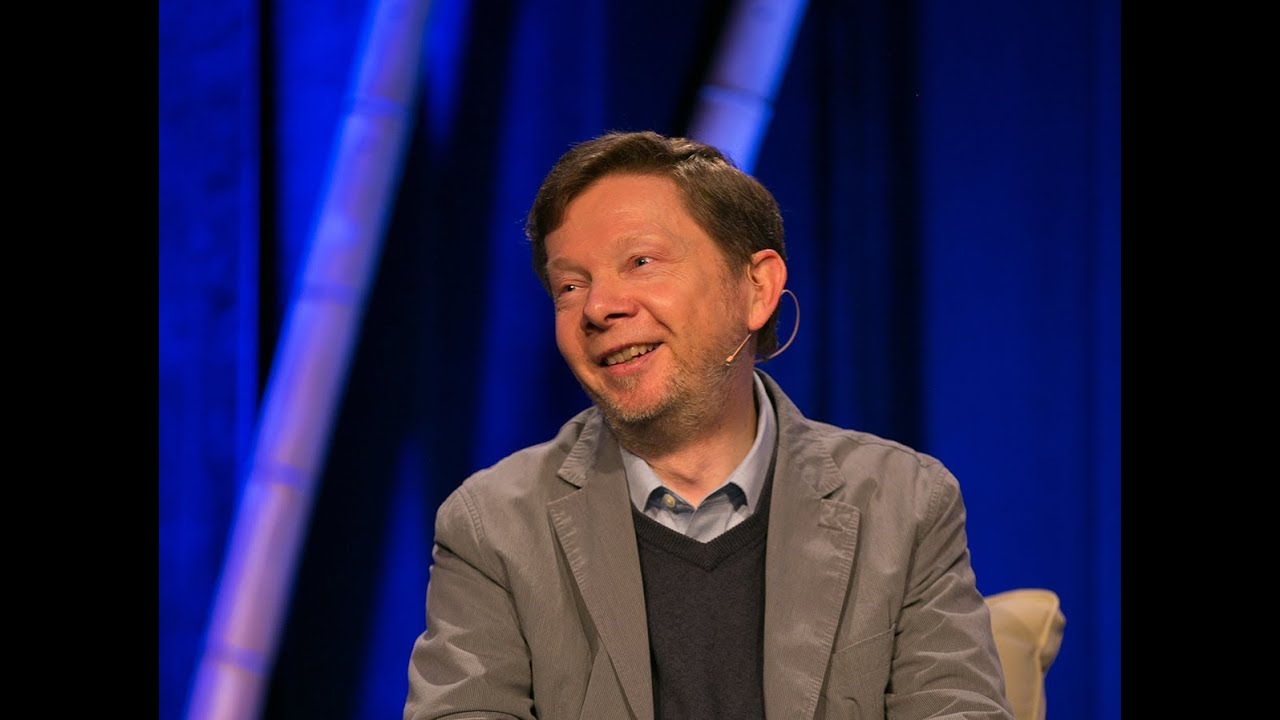 In The Power of Now, Eckhart Tolle emphasizes the transformative power of present-moment awareness as a means of spiritual awakening and personal growth. Central to Tolle's teachings is the idea that the mind's tendency to dwell on the past or worry about the future prevents us from fully experiencing the present moment. By shifting our focus to the "Now," we can break free from mental patterns of stress, anxiety, and distraction, ultimately finding peace and clarity.
Neuroscience supports the benefits of present-moment awareness, particularly through practices like mindfulness and meditation. Research shows that these practices activate the prefrontal cortex, the brain region responsible for higher cognitive functions like focus, decision-making, and self-regulation. When we practice mindfulness, we enhance our ability to make thoughtful choices, regulate our emotions, and stay centered in challenging situations.
At the same time, mindfulness practices reduce activity in the default mode network (DMN), a region of the brain associated with mind-wandering, self-referential thinking, and stress. This reduction in DMN activity is significant because excessive activity in this area has been linked to anxiety, depression, and other negative mental states. By quieting the DMN, mindfulness fosters a calm, present, and focused mind.
The combination of enhanced focus and reduced stress through mindfulness practices aligns with Tolle’s message in The Power of Now. According to Tolle, when we let go of our attachment to past regrets and future anxieties, we open ourselves to the richness of the present moment. This shift in consciousness not only improves emotional well-being but also promotes greater mental clarity and inner peace.
Tolle teaches that by embracing the present moment, we can experience a deeper sense of spiritual awakening. This awakening allows us to move beyond the constraints of our thinking mind and connect with a higher state of consciousness. In this state, we recognize that we are not our thoughts, but rather the awareness behind them. This realization brings a sense of freedom, as we no longer identify with the mental narratives that cause us suffering.
In The Power of Now, Eckhart Tolle emphasizes the transformative power of present-moment awareness as a means of spiritual awakening and personal growth. Central to Tolle's teachings is the idea that the mind's tendency to dwell on the past or worry about the future prevents us from fully experiencing the present moment. By shifting our focus to the "Now," we can break free from mental patterns of stress, anxiety, and distraction, ultimately finding peace and clarity.
Neuroscience supports the benefits of present-moment awareness, particularly through practices like mindfulness and meditation. Research shows that these practices activate the prefrontal cortex, the brain region responsible for higher cognitive functions like focus, decision-making, and self-regulation. When we practice mindfulness, we enhance our ability to make thoughtful choices, regulate our emotions, and stay centered in challenging situations.
At the same time, mindfulness practices reduce activity in the default mode network (DMN), a region of the brain associated with mind-wandering, self-referential thinking, and stress. This reduction in DMN activity is significant because excessive activity in this area has been linked to anxiety, depression, and other negative mental states. By quieting the DMN, mindfulness fosters a calm, present, and focused mind.
The combination of enhanced focus and reduced stress through mindfulness practices aligns with Tolle’s message in The Power of Now. According to Tolle, when we let go of our attachment to past regrets and future anxieties, we open ourselves to the richness of the present moment. This shift in consciousness not only improves emotional well-being but also promotes greater mental clarity and inner peace.
Tolle teaches that by embracing the present moment, we can experience a deeper sense of spiritual awakening. This awakening allows us to move beyond the constraints of our thinking mind and connect with a higher state of consciousness. In this state, we recognize that we are not our thoughts, but rather the awareness behind them. This realization brings a sense of freedom, as we no longer identify with the mental narratives that cause us suffering.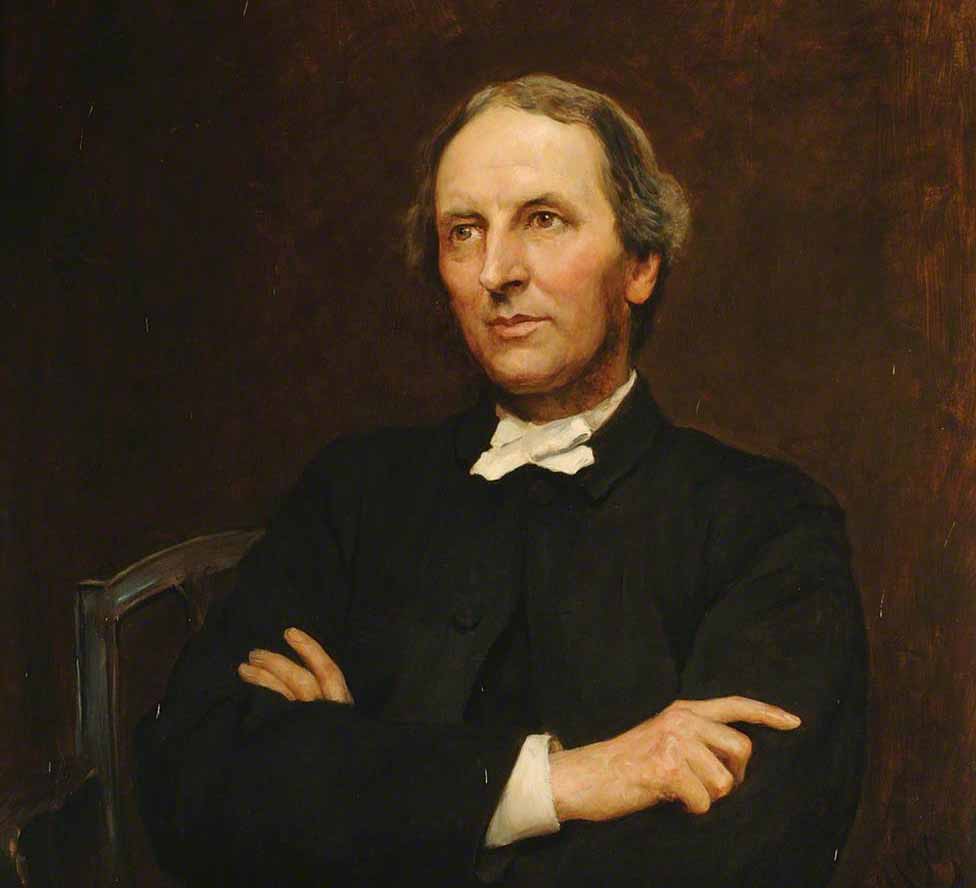 In Flatland: A Romance of Many Dimensions by Edwin Abbott, the concept of reality is explored through the lens of geometry and the limitations of perception. The story is set in a two-dimensional world inhabited by geometric shapes, where the inhabitants are unable to perceive dimensions beyond their own flat existence. Through the protagonist, a square, Abbott explores the concept that our understanding of reality is constrained by our sensory limitations and the dimensions we can perceive.
The narrative of Flatland serves as a metaphor for the limitations of human consciousness and how we are often trapped by our own perception of reality. Just as the inhabitants of Flatland cannot imagine a third dimension, humans may struggle to grasp the deeper, hidden aspects of existence beyond the visible world. Abbott's work encourages us to question the boundaries of our understanding and consider that there may be more to reality than meets the eye.
Neuroscience aligns with these insights by revealing that our brains are limited in their capacity to process information. We tend to rely on our sensory input and cognitive filters, which can restrict our ability to perceive and comprehend broader dimensions of reality. However, practices like meditation and mindfulness can help us expand our awareness and break free from these perceptual limitations. By cultivating present-moment awareness, we enhance our ability to perceive and process experiences more fully, transcending the boundaries of the ordinary, linear mind.
In a way, Flatland serves as a philosophical precursor to the ideas explored in works like The Power of Now by Eckhart Tolle. Both suggest that reality is more fluid and multidimensional than we may realize, and that expanding our consciousness through mindfulness or spiritual practices can help us access higher levels of awareness. Just as the square in Flatland has the potential to unlock an understanding of a third dimension, we too have the potential to open our minds to deeper layers of existence through awareness, presence, and reflection.
In Flatland: A Romance of Many Dimensions by Edwin Abbott, the concept of reality is explored through the lens of geometry and the limitations of perception. The story is set in a two-dimensional world inhabited by geometric shapes, where the inhabitants are unable to perceive dimensions beyond their own flat existence. Through the protagonist, a square, Abbott explores the concept that our understanding of reality is constrained by our sensory limitations and the dimensions we can perceive.
The narrative of Flatland serves as a metaphor for the limitations of human consciousness and how we are often trapped by our own perception of reality. Just as the inhabitants of Flatland cannot imagine a third dimension, humans may struggle to grasp the deeper, hidden aspects of existence beyond the visible world. Abbott's work encourages us to question the boundaries of our understanding and consider that there may be more to reality than meets the eye.
Neuroscience aligns with these insights by revealing that our brains are limited in their capacity to process information. We tend to rely on our sensory input and cognitive filters, which can restrict our ability to perceive and comprehend broader dimensions of reality. However, practices like meditation and mindfulness can help us expand our awareness and break free from these perceptual limitations. By cultivating present-moment awareness, we enhance our ability to perceive and process experiences more fully, transcending the boundaries of the ordinary, linear mind.
In a way, Flatland serves as a philosophical precursor to the ideas explored in works like The Power of Now by Eckhart Tolle. Both suggest that reality is more fluid and multidimensional than we may realize, and that expanding our consciousness through mindfulness or spiritual practices can help us access higher levels of awareness. Just as the square in Flatland has the potential to unlock an understanding of a third dimension, we too have the potential to open our minds to deeper layers of existence through awareness, presence, and reflection.
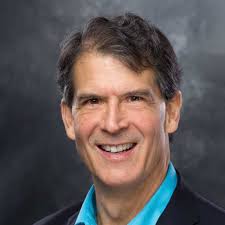 In Proof of Heaven, Dr. Eben Alexander, a neurosurgeon, shares his personal near-death experience (NDE) and the profound insights he gained from it. His experience challenges the traditional materialist view of consciousness, which holds that consciousness is purely a product of the brain. Alexander's NDE occurred after he contracted a rare, life-threatening brain infection that left him in a coma for seven days. During this time, he reported vivid, transcendental experiences that were beyond the realm of physical explanation.
One of the most striking aspects of Alexander's experience was his encounter with a bright, radiant light and the overwhelming sense of peace that accompanied it. These elements are commonly reported by others who have had NDEs, suggesting a shared, universal aspect to these experiences. Rather than being the result of hallucinations or brain malfunction, Alexander argues that these experiences point to the possibility that consciousness exists independently of the physical brain.
Alexander's insights from his NDE offer evidence that consciousness may not be confined to the brain or the body. He proposes that the mind and spirit can transcend physical limitations, and his account supports the idea that there may be a higher realm of existence, potentially an afterlife, where consciousness persists after the death of the body. This perspective challenges the materialist worldview, which posits that consciousness is entirely produced by the brain and ceases upon death. Instead, Alexander suggests that consciousness could be part of a deeper, more universal reality, beyond the confines of physical existence.
Near-death experiences, as explored in Proof of Heaven, point to the potential for consciousness to operate on a level that transcends our understanding of the brain's functions. Many NDE reports describe encounters with deceased loved ones, feelings of unconditional love, and experiences of unity with a greater consciousness—phenomena that cannot be fully explained by conventional neuroscience or physical processes. These accounts suggest that consciousness may operate outside of the biological processes we currently understand, hinting at a broader, more expansive view of existence.
In Proof of Heaven, Dr. Eben Alexander, a neurosurgeon, shares his personal near-death experience (NDE) and the profound insights he gained from it. His experience challenges the traditional materialist view of consciousness, which holds that consciousness is purely a product of the brain. Alexander's NDE occurred after he contracted a rare, life-threatening brain infection that left him in a coma for seven days. During this time, he reported vivid, transcendental experiences that were beyond the realm of physical explanation.
One of the most striking aspects of Alexander's experience was his encounter with a bright, radiant light and the overwhelming sense of peace that accompanied it. These elements are commonly reported by others who have had NDEs, suggesting a shared, universal aspect to these experiences. Rather than being the result of hallucinations or brain malfunction, Alexander argues that these experiences point to the possibility that consciousness exists independently of the physical brain.
Alexander's insights from his NDE offer evidence that consciousness may not be confined to the brain or the body. He proposes that the mind and spirit can transcend physical limitations, and his account supports the idea that there may be a higher realm of existence, potentially an afterlife, where consciousness persists after the death of the body. This perspective challenges the materialist worldview, which posits that consciousness is entirely produced by the brain and ceases upon death. Instead, Alexander suggests that consciousness could be part of a deeper, more universal reality, beyond the confines of physical existence.
Near-death experiences, as explored in Proof of Heaven, point to the potential for consciousness to operate on a level that transcends our understanding of the brain's functions. Many NDE reports describe encounters with deceased loved ones, feelings of unconditional love, and experiences of unity with a greater consciousness—phenomena that cannot be fully explained by conventional neuroscience or physical processes. These accounts suggest that consciousness may operate outside of the biological processes we currently understand, hinting at a broader, more expansive view of existence.